 |
| Category: Western
Front |

|
|
|
|
|
| Fromelles:
a deadly feint in the 1916 Somme campaign |
- This page should be considered in
conjunction with Somme
1916, which gives an
overview.
 to go there.
to go there.
|
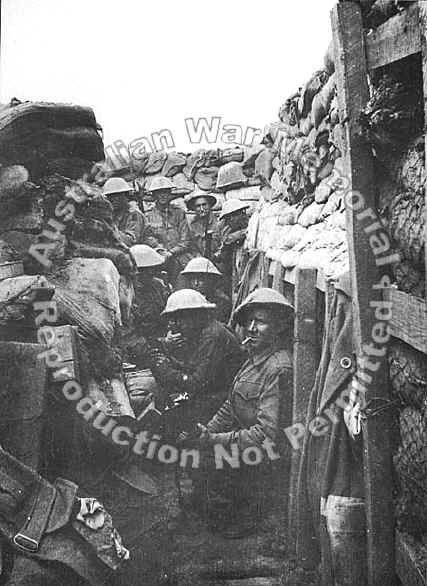 |
Fromelles,
France.
19 July
1916.
Men
of the 53rd battalion waiting to don their equipment for the attack at Fromelles.
Only
three of those here shown came out of the action alive, and those three
were wounded.
(donated
by L/Cpl. C.H. Lorking, 53rd Battalion)
|
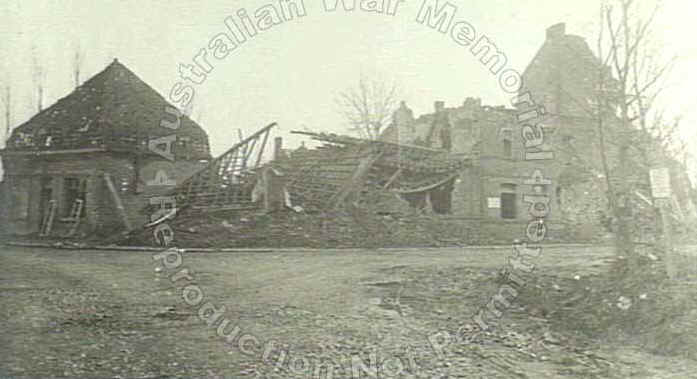 |
| France.
11 November 1918. An intersection of three roads in the eastern end of
the ruined village. It was in this vicinity that the 5th Division
concentrated for their attack at Fromelles on 19 July 1916. |
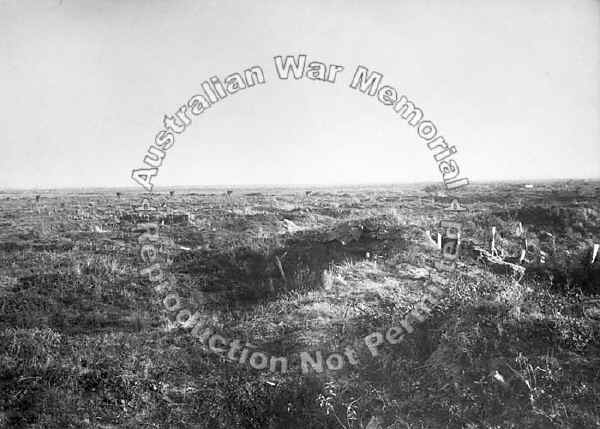 |
| Fromelles,
France. 11 November 1918. The old no man's land of the Fromelles
Battlefield, as it appeared on 11 November 1918, over two years after
the action in which the troops of the 5th Australian Division and the
61st British Divisions suffered heavily, being forced to evacuate the
positions several hours after their capture. The engagement took place
on 19 July 1916 and was made in order to divert German attention from
the Somme at the time when the Battle of the Somme was proceeding. The
remains of the River des Layes line of trenches, and old German pill
boxes which formed part of the defences in the Sugar Loaf Salient, can
be seen in the right of the picture, though thickly overgrown with
grass. |
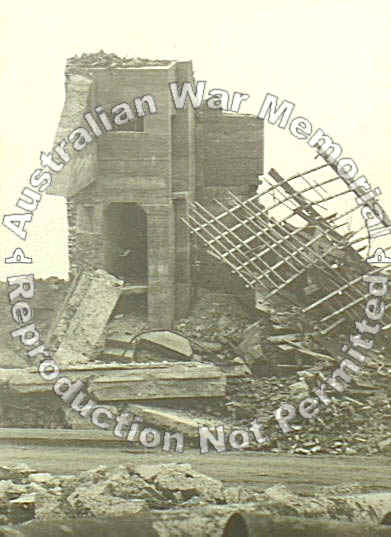 |
Fromelles-Le
Maisnil Ridge, France.
An
observation post of two storeys built up in concrete inside an old house
on the Fromelles-Le Maisnil Ridge.
From
this position the enemy could discern the movements of the 5th Division
in preparation for the attack on Fromelles, which took place on 19 July
1916.
Enemy
intelligence papers that were obtained subsequently stated that the
actual moment of attack was known some considerable time beforehand. |
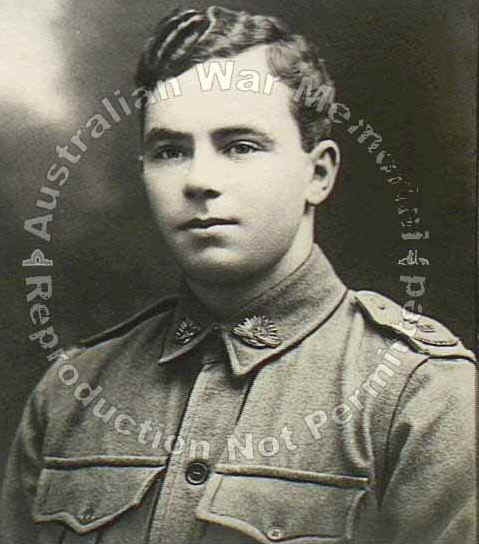 |
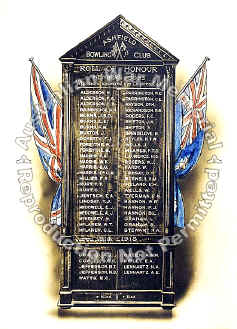
|
| 3331
Sergeant (Sgt) Ernest Augustus Jentsch, 53rd Battalion. Jentsch was
killed in action (KIA) on 19 July 1916 during the battle at Fromelles,
France. (Donor D. Beckman) Taken July 1915
|
Ashfield,
NSW.
Ashfield Bowling Club Roll of Honour flanked by an Australian flag and
the Union Jack. Names
of members' sons included in the Roll: |
| H.
Alderson, F.S. Alderson, C.S. Alderson (killed), H.H. Bainbridge, J.S.D.
Burns, E.E. Burns, J. Buxton, F.J. Doherty (killed), W.J. Forsythe, M.
Forsythe, F.A. Harris, W.K. Harris, E.O. Harris, Dr. C.M. Harris
(killed), F.R. Hillier, F.T. Hurt (killed), G. Hurt, 3331
Sergeant Ernest Augustus Jentsch (killed in action on 19 July 1916
during the battle at Fromelles, France),
T.J. Lindsay, E.J. McDowell, A.J. McDowell, H. McKensey, W.T. McLaren
(died), G.L. McLaren, A.J. Cowled, S.G.C. Cowled, R.T. Jefferson, N.B.
Jefferson, E.C. Watts, W.E. Parrington (killed), C.E. Parrington
(killed), Dr. H. Rayson, R.B. Richardson, F.C. Rogers, J.N. Shipton, V.
Shipton, R. Spendelove, K.T.W. Styles (killed), J. Wells, F.T.D. Meares,
N.G. Laurence, W.J. Rogers, W. Hardy, D.Y. Lindsay, L.H.M. Burns, E.H.
Ireland, W.Wells, F.M. Tyerman, W.R. Hannon, P.J. Hannon, B.L. Hannon,
L. Graham, R. Graham, R.A. Stewart, R.A.R. Green, E.A. Ridley, H.A.
Lennartz and E.A. Lennartz. (Original print held in the AWM Archive
Store) (Donor D. Beckman)
|
|
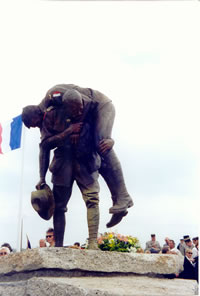
|
Australian
Memorial Park Fromelles
The Park is situated around the remains of fortifications
on the part of the German line, which was captured by the 14th
Australian Brigade and held overnight on 19-20 July 1916. The
Park and the nearby VC Corner Cemetery, some 3 Kms from
Fromelles, in northern France, are 8 Kms south of Armentieres,
and 16 Kms west of Lille.
The central feature of the Memorial Park is the sculpture
"Cobbers" by Peter Corlett of Melbourne. The
sculpture is based on 3101 Sergeant Simon Fraser of 57th
Battalion, a 40 year old Victorian farmer turned soldier who
rescued many men from the battlefield, carrying a man of 60th
Battalion. Later, Fraser, as a Lieutenant of 58th Battalion,
was Mentioned in Despatches before being killed at Bullecourt
on 12 May 1917. His name is recorded on the Australian
National Memorial at Villers-Bretonneux.
|
| In 1916, the village of
Fromelles south of Armentières, lay behind the German lines and close
to the front itself. A feature of the line, three kilometres north west
of Fromelles, was a bulge known as the Sugar Loaf.
The British Commander in Chief,
General Haig, had opened a major offensive on the Somme further south
because the Germans were withdrawing divisions from the Lille area to
reinforce their Somme positions.
It was suggested that an artillery
"demonstration" be staged at the Sugar Loaf to make the
Germans think a major offensive was imminent there and so make them
nervous about any further troop withdrawals.
This modest objective was enlarged
into a broader plan to mount an infantry attack on the Sugar Loaf
salient, advance to Fromelles and capture the heights of the Aubers
Ridge.
The 5th Division AIF was assigned the
left flank of the Sugar Loaf, and the British 61st Division, the right.
From 11 a.m. on 19 July an artillery
bombardment was laid down on the German lines as the Australians made
their way through communication trenches to their jumping off positions.
In the bright sunshine and clear
visibility, the Germans saw them coming and began their own counter
barrage of the communication trenches.
Many Allied troops were killed or
wounded before they even reached the front line. The communication
trenches were blown to pieces and became blocked with the dead, the
wounded and the dying.
At 6 p.m. the men of the 5th Division
and the British 61st Division attacked the Sugar Loaf.
The left flank brigades of the 5th
Division the 8th and the 14th quickly reached the German lines and went
through them into the open countryside beyond.
The central Australian brigade, the
15th, was pinned down by intense enemy machinegun fire as it attempted
to cross no man's land at its widest point.
That night, as the 8th and 14th
Brigades tried to consolidate their positions, the Germans counter
attacked fiercely and worked their way behind the Australians.
As dawn approached on the 20th, many
units were cut off from the Australian lines and had to turn round and
fight their way back.
According to the official Australian
war historian Charles Bean, the sight of the Australian trenches on the
morning of 20 July 1916 "packed with wounded and dying, was
unexampled in the history of the AIF".
The 5th Division sustained 5,533
casualties, 400 of whom were made prisoners of war.
No man's land was cluttered with the
dead and wounded. Many wounded Australians were shot dead as they
crawled about in no mans land, revealing their positions to the watching
German snipers and machine gunners.
The Australians attempted to arrange a
truce with the Germans so the wounded could be rescued. Such action was
vetoed by their own High Command.
Military historians do not mince words
about Fromelles the attack is considered to have been a fiasco.
The Australian dead of Fromelles are
recalled at a cemetery located in the middle of the old battlefield VC
Corner Australian Cemetery.
Here are the remains of 410 Diggers
whose unidentifiable remains were recovered after the war. They are
buried in unmarked plots. On a wall behind them are the names of 1,298
men of the 5th Division who died in the surrounding fields and have no
known grave.
Text courtesy of the Australian Department
of Veterans' Affairs |
|